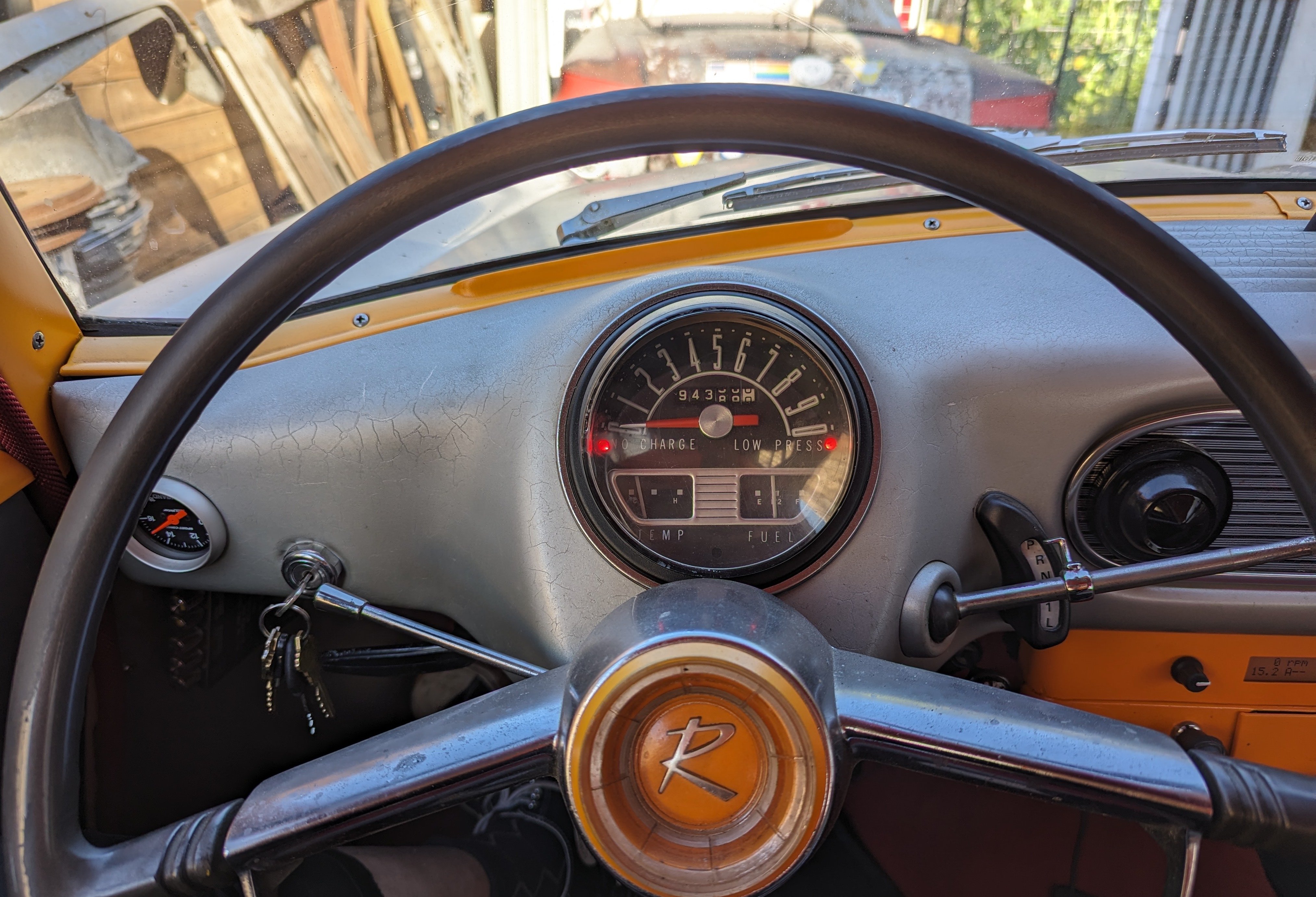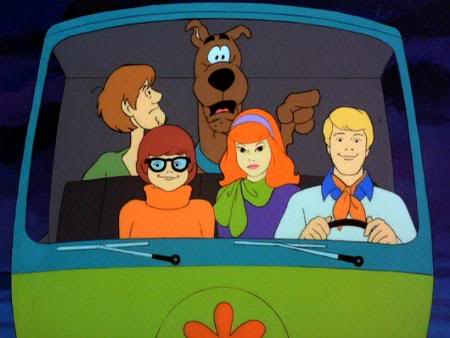Guys it’s been 8 months. It was a bad take.
I find I never actually look directly at an analogue speedometer, you kinda just know from the angle of the needle what speed you’re doing
New to driving maybe?
That’s probably why digital displays still have analog speedometer options. At a glance it’s easier to tell what’s happening with your speed, rev count, and other levels like fuel.
But much of that utility is useful for manuals and ICE-powered cars.
Unfortunately because of the digital spedometer, the analog one usually suffers.
My mid-2010s c-class has an analog spedometer which is absolutely useless as it does not have a full needle and the fonts, spacing and colors are made to blend in with the interior instead of being readable.
All this makes me use the digital one, which is very distracting and usually lagging behind, especially when quickly accelerating.
Reading very-fast-changing data is probably the only good argument I’ve seen for the superiority of analog guages in modern cars. A fast changing digital display is impossible to read. But practically speaking, when the data is changing that quickly, typically precision isn’t important.
If car companies cared (which they clearly don’t) they could make digital displays better, by having a low refresh rate when there is low acceleration (to avoid distracting the driver), increase the refresh rate under heavy acceleration to display more current data, and apply some kind of effect to the fast changing digits to convey a sense of how fast they’re changing even if they’re changing too fast to read. Think of the odometer style altitude readout on old airplanes, where even if you can’t read the number you can tell wtf is up by how fast the numbers are spinning by.
This isn’t to say that digital guages are better. They’re just different. It’s a personal preference thing.
But you’re absolutely right that the analog guage has suffered from neglectful design in recent years.
Easier to read?
That would imply that an analog speedo is tough to read which is laughably wrong.
It can be? Not that it’s hard to read , but I felt it was harder to determine exact speeds in my last car. Am I going 41 of 40, 35 or 33. It’s not that big of a deal but I don’t really have that problem with digital.
Analog is occupied by speeds you will never use. 80 to 260 is useless to be and practically a waste of space for consumer cars.
Am I going 41 of 40
No speedo out there is accurate enough to distinguish between those two speeds.
I think in this case analogue is actually easier to read. You don’t need to actually read any of the numbers to know hot fast you’re driving, you just look at the angle of the needle.
The human brain is great at things like this, and less good at reading numbers, which is much more learnt.
An analogue gauge is useful because you can see the rate of change not just the current value.
You can design a digital readout to intuitively provide the same. And I think you’re overstating the importance of rate of change in analog guages that you find in commuter cars.
Some sort of scale on the side/bottom of the screen would solve that easy enough. It’s only really useful when accelerating into the highway or from a red light, not terribly important.
deleted by creator
Not really, you never really check how fast the needle moves it’s a side effect of checking your speed. A scale by the numbers, or as a circle around the numbers, would have the same affect. You just noticed how fast it’s moving in your periphery as you check your speed.
More points of failure and less intuitive.
I disagree that it is inherently less intuitive, it depends on the design. You’re overthinking the points of failure part.
My 2019 Jetta has a 100% digital instrument cluster. It’s currently broken…just a black screen. It’s neat how reliable analogue instruments are.
This must be related to people in their 20’s not knowing how to read a traditional clock anymore.
Yeah, probably not. It’s just that digital is better, analog is just what folks are used to and that for some people means it’s automatically better. I grew up with analog, my first cars had analog and if I’ve never seen it again, I wouldn’t miss it.
Not true. When I glance down I am not looking for a numerical value, “57.8”. I’m looking for the pointer around “60”, … yeah that’s what it feels like, all’s well.
We’re not machines processing data. Cars are prosthetic devices, extensions of our bodies. You feel them down the road. You hit a big pothole and think, “ouch”.
Digital odometer is necessary. Everything else is a visual ratio. Racers (used to) arrange their gauges so that every pointer is more or less straight up and down when “normal”. You don’t want to puzzle out meanings, you want a visual indication of what you’re feeling in the car.
Digits give us precision, which is absolutely the last thing you need while driving. At best you need go/nogo, or trend. (“fuel lower than it was”).
With instruments, the following are all completely independent: precision, resolution, accuracy. Even a digital speedo, how many digits you need? 2? 3? 6? lol 27.234 doesn’t mean shit. “28” is better. “hair less than 30” is fine. And “27.234” is just dumb when the speedo has a 2% error rate, which is quite good, as tires size varies with load, air pressure, brand, wear.
What’s REALLY nice is a separate display with DIGITS on an LCD and a DATA LOGGER! Then you get both! It’s the best! I do this to my project cars; antiquate weird dials that are great for DRIVING, and a datalogger that writes to a microSD that 99% of the time you don’t care about, but if it’s running funny, or something fails, you can see it in the logs. It’s GREAT!
You’re absolutely right that well designed analog guages are glancable. But that only really matters if you’re racing. If the difference between glancing for 0.4 seconds and 0.5 seconds matters, then you’re driving too aggressively for a public road.
I personally prefer the digital speedo. I find a sense of comfort in the perceived accuracy. I find it easier to read than analog guages on most commuter cars, where the needle is pointed in some random direction for most speed limits, the numbers are small and dense, with lots of markers. With a digital speedo I can glance down to my big ol’ high contrast display and be like “speed starts with a 5, good enough”
I’m not looking at the speedo to get a trend, I can hear the engine or feel the acceleration in my body for that.
For other guages: Tachometer: is dying off, but really all you need is a shift light if you’re even driving a manual. Gas: the amount in your tank doesn’t matter, it’s your range that matters, and a digital display for range makes sense because it lets you plan your trip. Oil/coolant temps: hot/normal/cold lights are probably all you need. Even then you really only need to show it when it’s not normal (which is something a digit dash can do). Boost: for daily commuters (where turbos are actually pretty common now) just a light to show if boost is too high. For performance cars, this is pretty much the only time I can see an analog guage really being better, but even then there are other less common but equally effective ways to display this kind of low-precision wide-range information.
Of course, if you’re talking about style and aesthetics, then both digital and analog have their place, depending on the aesthetic you’re going for.
Here’s a couple shitty pics of my daily driver:


You just wanted to show off your sick classic ride. And I for one need to see the outside now.
Lol not completely true or untrue. Nahh would be thread hijacking.
I personally hate the digital cluster, I would rather have analog one with display in middle. I don’t find that analog cluster needs more time to read.
I like analog gauges. I very much like knobs. I dislike anything digital in a car other than a touch screen. Cars need to be able to be operated at a glance and by feel.
Touch screens are a pox upon vehicles, and need to be removed.
Disagree. I like having the screen for Android auto with music, podcasts, and especially gps. I do hate digital buttons when they aren’t necessary but i like having the big main display.
Touch screen in cars isn’t a good idea, though. They may distract the driver.
Yup! If I’m driving and want to change station or volume I need to be able to know what I’m doing without watching, and it already feels distracting and dangerous enough to me. With a touch screen I can’t feel the buttons or knobs and I must look at the screen to do anything.
I never had a car with a touchscreen (my current car doesn’t even have an AUX or USB port) so I don’t know if it’s already like this, but probably an hybrid between the two would be ideal. You get a touchscreen to thinker with it and create presets or whatever when you’re not moving, and buttons to change song/station/preset/volume/whatever when driving
Removed by mod
There are a whole bunch of problems with this:
- most of the sensors are digital
- the guages are getting their signals from the ECU computer, which is a digital signal
- the guages in your car are not $10000 scientific equipment, they’re not that precise.
- the design of these analog guages means that most precision would be lost just due to human vision.
There are good arguments for analog guages in cars, but precision isn’t one.
Removed by mod
“Didn’t understand the sampling theorem” for $2 please.
As long as the frequency of the measured signal is <1/2 the sample rate, you can reconstruct the original signal perfectly.
If you plugged this jaggy-looking graph into a digital to analog converter with perfect analog circuitry, you’d get exactly the sine shown.
I think parent is referring to quantization in the amplitude/y-axis (bitdepth), whereas you are referring to quantization in time/x-axis (sampling rate).
Removed by mod
Yes I think you used the terms correctly — it should be referring to the amplitude. “Discrete sampling” or just sampling rate is the preferred way to refer to time, you’re right.
I was trying to use consistent language in response to the reply claiming you were misunderstanding the sampling theorem. I think that poster was confusing discrete/quantized steps in time with discrete/quantized steps in amplitude.
Their comment about SNR is certainly true though.
Quantisation is a potential factor but the graph does not show its effects and their comment describes the supposed effects sampling, not quantisation.
Also, when we come to discussing SNR, you’ll have to consider the SNR of analog systems too.
The graph posted absolutely exhibits both quantization and discrete sampling. The blue trace on the Y-axis shows steps of 1 — that’s quantization.
Removed by mod
The number of people on here who seem to think that an analog instrument cluster is connected directly to the things they’re displaying, rather than connected to the ECU computer. Or that a PWM servo motor is more reliable than a screen. News flash: if you lose power to either, you aren’t able to read it.
An well designed analog guage is easier to read out the corner of your eye, or at a quick glance. But that really only matters if you’re racing, and even then it’s dubious.
A poorly designed digital guage can be distracting at night, if they use a screen tech that has poor black levels, or have lots of bright elements on the screen at night. It basically shines a light at your face and interferes with your night vision. But most manufacturers are better than that, these days, it’s not much different than the light that illuminates your analog gauges.
So really it’s personal preference, and some people like to justify their preference with bullshit so that they can feel superior. YMMV.
I just want my speed and tach projected on the windshield. I feel like that’s not too much to ask as a standard safety feature since the tech is like decades old at this point.
This is now a feature in many modern cars! The Mazda CX5 has a cool HUD that displays speed and even navigation, for instance.
Yup! It’s commonly called a heads up display
The more your car is computerized, the less control you have over it as the end user. The best cars on the road are the ones with no touch screens and no gps tracking bull crap. Analog speedometers and tachometers are just as good as a digital one and can be repaired easily if they fail. Try repairing your newfangled vehicle when over half of its functionality shits the bed because theres an error with the console software.
I remember in the late 90s or so a car came out with an all digital instrument cluster. It made the news when they would completely fail, leaving people to not know anything about their speed or anything else about their car.
A speedometer is more reliable and easy to read. Even so, several cars have them. Some even project your speed in the windshield as part of a heads up display.
I don’t know why this hasn’t been universally adopted. I love my HUD,
Digital speedometer? Gross.
I much prefer analogue. Angle of the needle is a quick read + I don’t like relying on a digital display for my essential information. Also aesthetics













